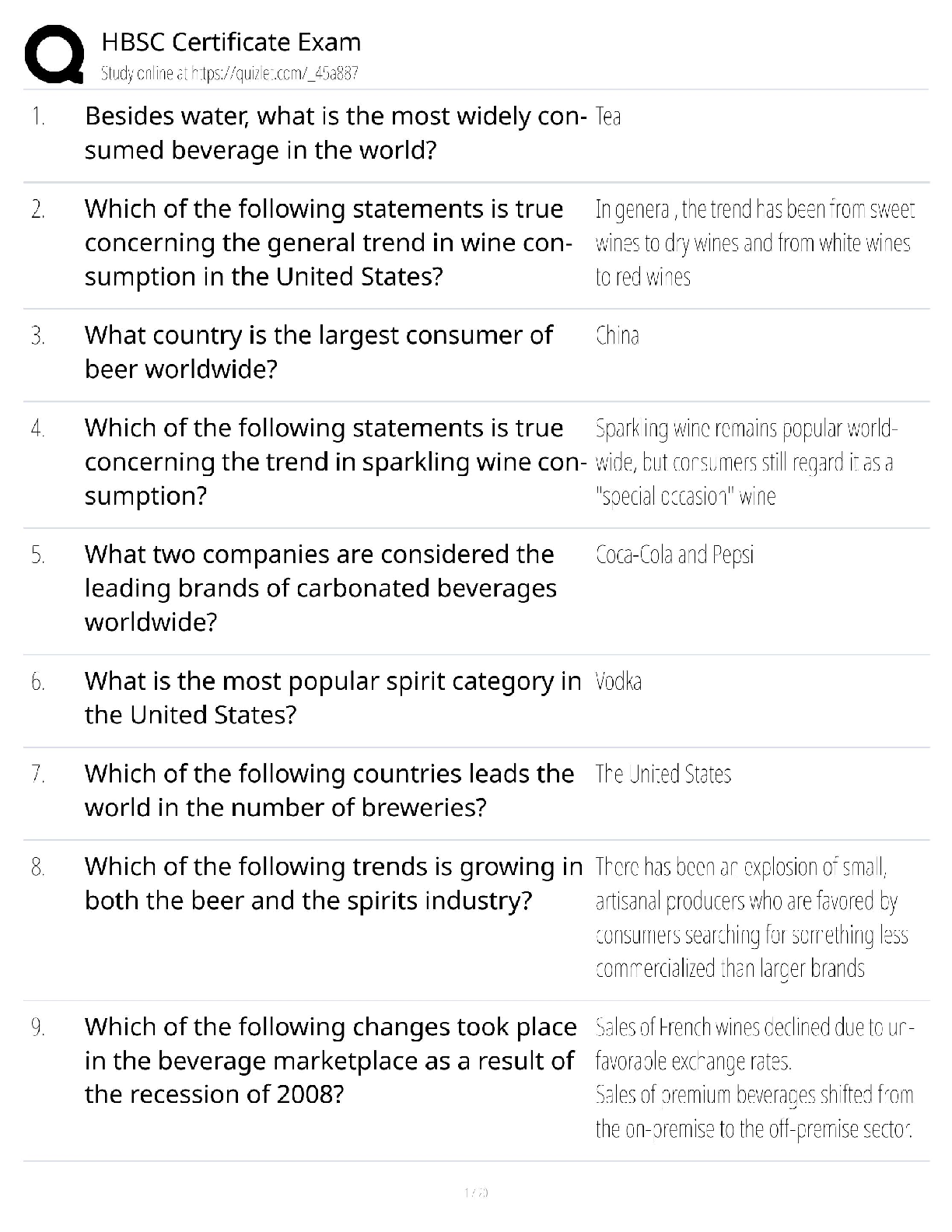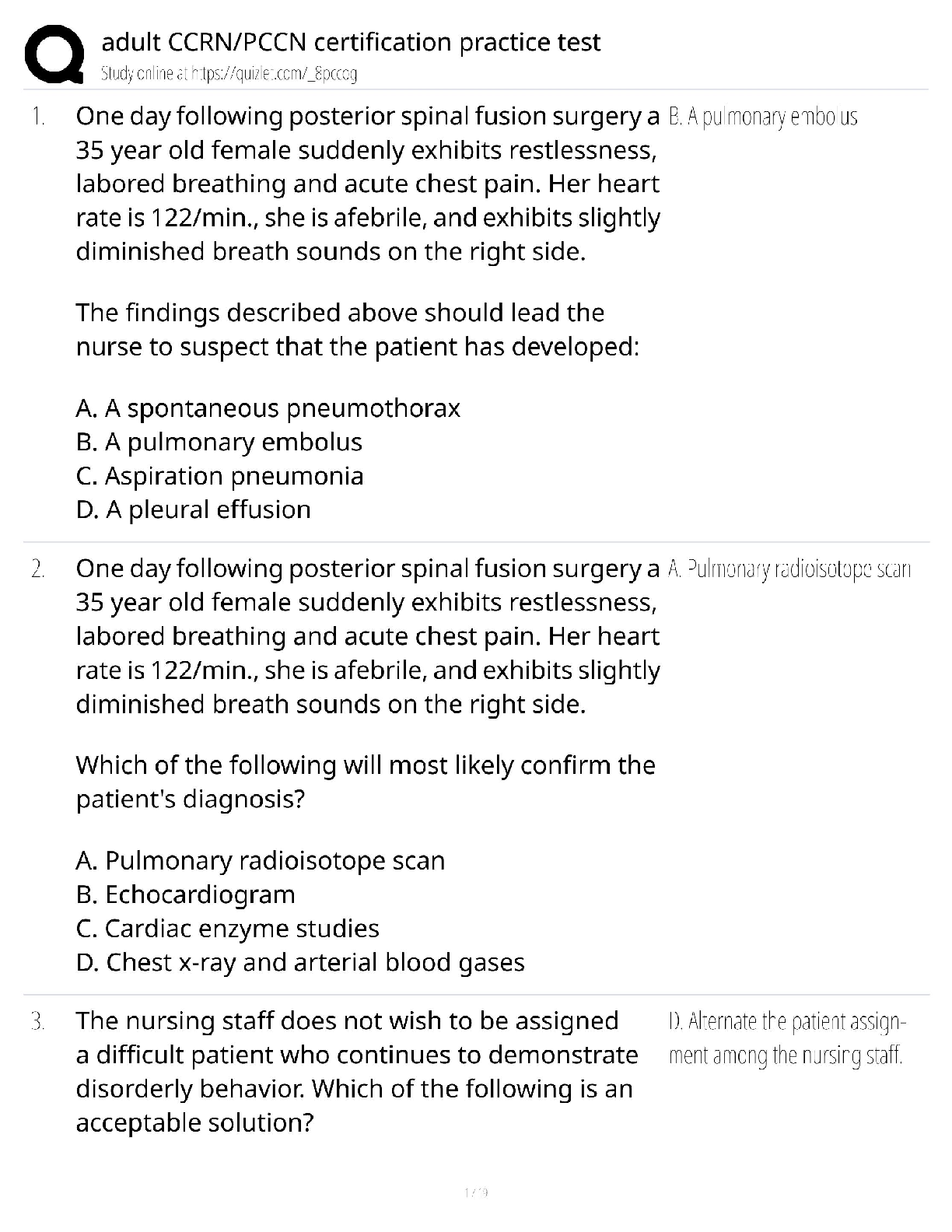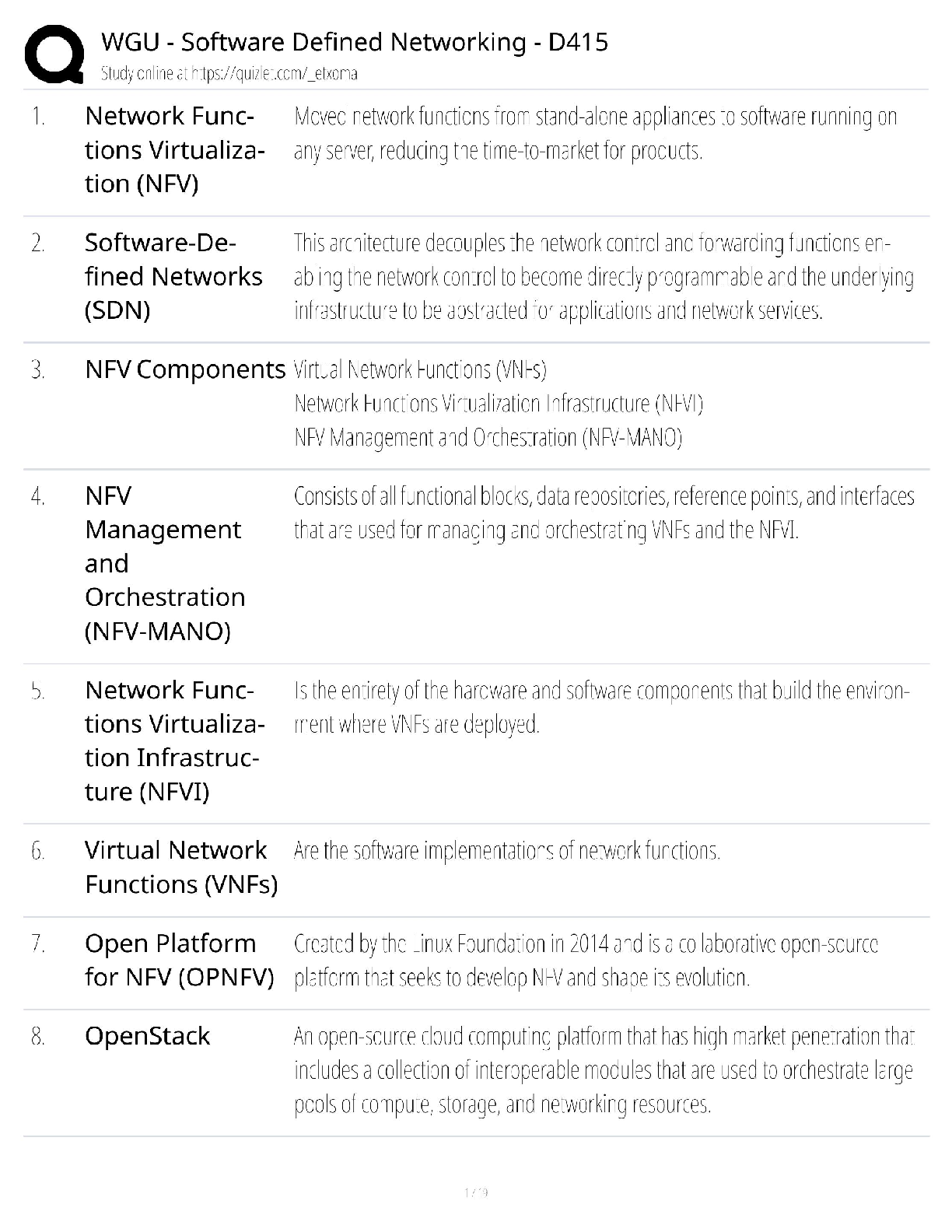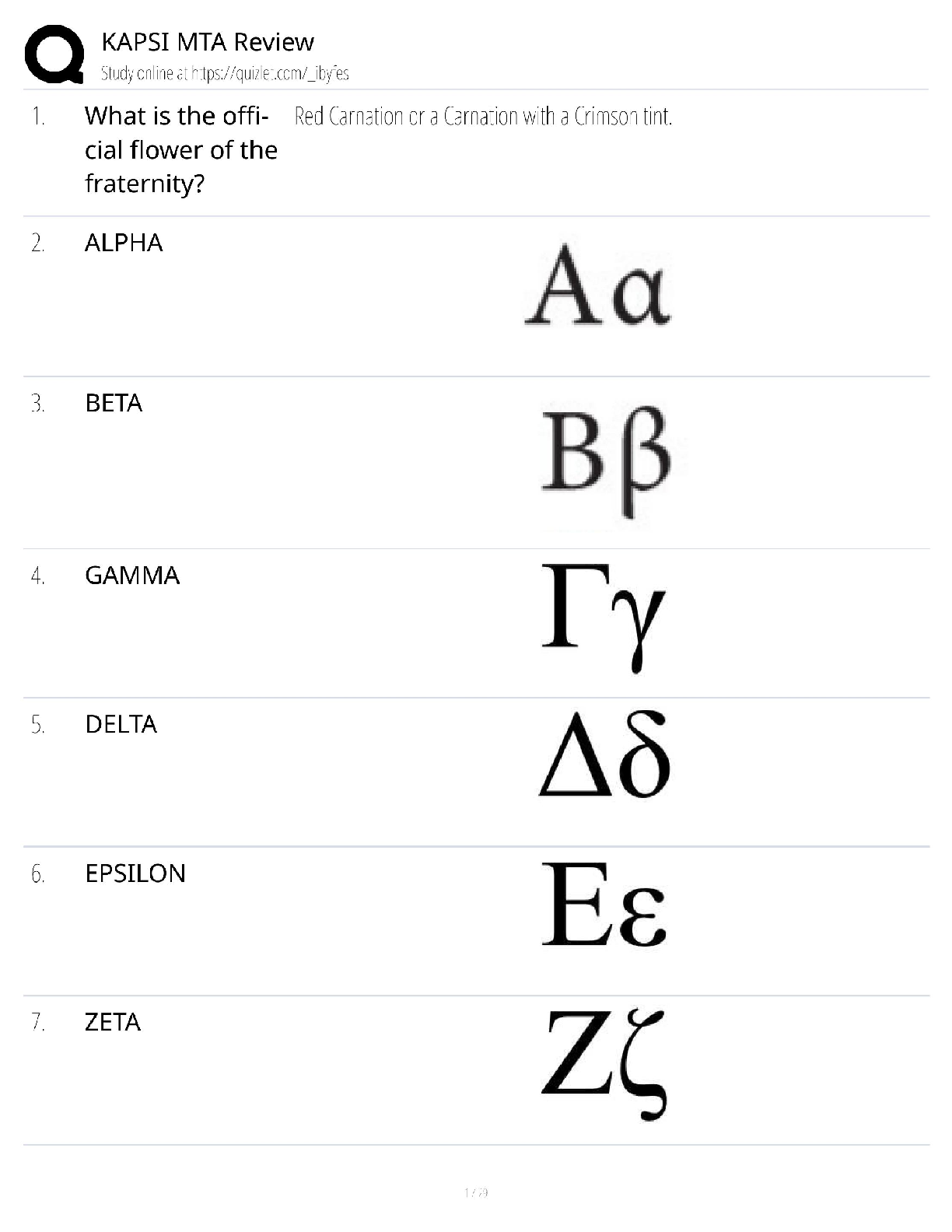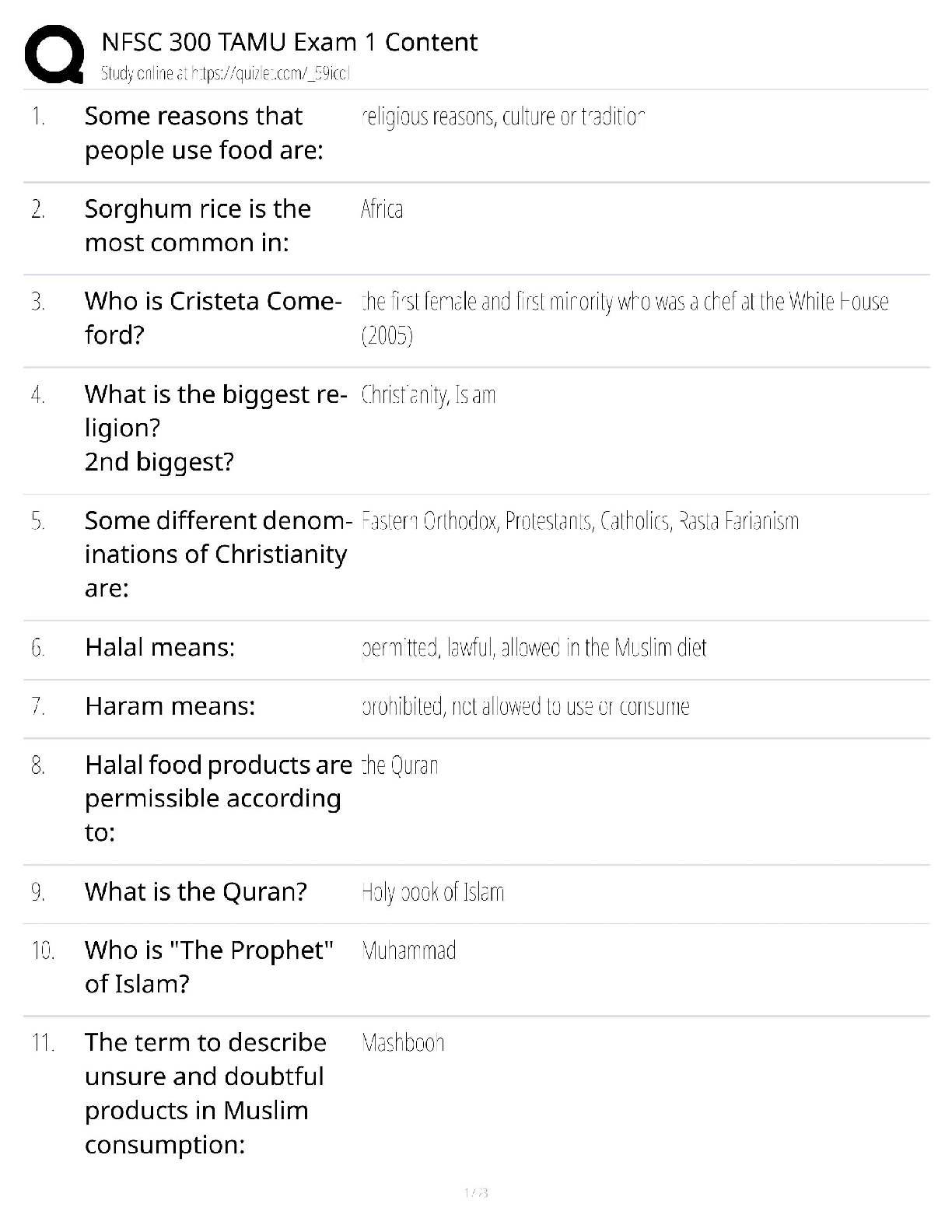Business Law > QUESTIONS & ANSWERS > HRM Chapter Two Quiz Questions &Answers. 22/23 (All)
HRM Chapter Two Quiz Questions &Answers. 22/23
Document Content and Description Below
. The ________ Amendment to the U.S. Constitution states, "no person shall be deprived of life, liberty, or property, without due process of the law." A) First B) Fifth C) Tenth D) Thirteenth - � ... ��✔Fifth 2. Title VII of the 1964 Civil Rights Act prohibits discrimination based on all of the following characteristics except: A) race. B) sexual orientation. C) color. D) religion. - ✔✔Sexual orientation 3. Title VII of the 1964 Civil Rights Act makes it unlawful to fail or refuse to hire an individual based on ________. A) race B) religion C) national origin D) All of the above. - ✔✔All of the above 4. How many members serve on the Equal Employment Opportunity Commission? A) three B) five C) nine D) ten - ✔✔Five 5. The establishment of the EEOC ________ the ability of the federal government to enforce equal employment laws. A) greatly enhanced B) greatly reduced C) hampered D) truncated - ✔✔Greatly enhanced6. Members of the EEOC are appointed by the ________. A) Senate B) Supreme Court C) President of the United States D) Vice-President of the United States - ✔✔President of the United States 7. Members of the EEOC serve ________ terms. A) 3 year B) 5 year C) 10 year D) indefinite - ✔✔5 year 8. The Equal Pay Act of 1963 allows differences in pay based on which of the following factors? A) a factor other than sex B) a merit system C) a seniority D) All of the above. - ✔✔All of the above 9. (The) ________ made it unlawful to discriminate in pay on the basis of sex when jobs involve equal work, require equivalent skills, effort, and responsibility, and are performed under similar working conditions. A) Title VII B) Equal Pay Act of 1963 C) Executive Order 11246 D) Age Discrimination in Employment Act of 1967 - ✔✔Equal Pay Act of 1963 10. When companies utilize ________, they take steps to eliminate the present effects of past discrimination. A) affirmative action B) executive orders C) rehabilitation action D) anti-discrimination guidelines - ✔✔Affirmative action 11. The Equal Pay Act requires the same wages when the job involves equal ________. A) work B) time spent working C) amount of educationD) amount of effort - ✔✔Work 12. Which of the following factors is not an acceptable basis for different pay for equal work under the Equal Pay Act of 1963? A) gender B) seniority system C) merit pay system D) quality of production - ✔✔Gender 13. Jack is a 55-year-old American of Anglo-Saxon descent. What legislation is intended to protect Jack from discrimination? A) Title VII B) Equal Pay Act of 1963 C) Executive Order 11246 D) Age Discrimination in Employment Act of 1967 - ✔✔Age discrimination in Employment Act of 1967 14. Making an extra effort to promote and hire under-represented protected individuals is called ________. A) progressive desegregation B) affirmative action C) progressive action D) permitted discrimination - ✔✔Affirmative Action 15. The ________ requires employers with federal contracts over $2500 to take affirmative action in employing handicapped persons. A) Age Discrimination in Employment Act B) Vocational Rehabilitation Act C) Equal Pay Act D) Office of Federal Contract Compliance Programs - ✔✔Vocational Rehabilitation Act 16. The Vocational Rehabilitation Act requires that employers accommodate disabled workers except when doing so imposes ________. A) an undue hardship B) any form of inconvenience C) any financial burden D) any objection by the customers - ✔✔An undue hardship17. The Age Discrimination in Employment Act of 1967 protects workers who are ________ and older. A) 40 B) 50 C) 55 D) 63 - ✔✔40 18. The Pregnancy Discrimination Act treats pregnancy as a(n) ________. A) disability B) disease C) unspecified condition D) gender specific conditionality - ✔✔Disability 19. What was the name of the landmark case the Supreme Court used to define unfair discrimination? A) Roe v. Wade B) Meritor Savings Bank FSB v. Vinson C) Griggs v. Duke Power Company D) Faragher v. City of Boca Raton - ✔✔Griggs v. Duke Power Company 20. Unwelcome sexual advances and requests for sexual favors are called ________. A) sexual harassment B) rude C) legislative fodder D) chauvinistic - ✔✔Sexual harassment 21. In Griggs v. Duke Power Company, Griggs sued the power company because it required coal handlers to be high school graduates. The case was decided in favor of Griggs because ________. A) high school diplomas were not related to job success as a coal handler B) Duke Power Company intended to discriminate against blacks C) no business necessity existed D) Griggs held a GED - ✔✔High school diplomas were not related to job success as a coal handler 22. If a person is in a protected class, he or she is protected by ________. A) Department of Labor B) Sarbanes-Oxley ActC) Title VII of the Civil Rights Act D) Consumer Protection Act - ✔✔Title VII of the Civil Rights Act 23. Which of the following is NOT a potential source of sexual harassment? A) supervisors B) customers C) co-workers D) None of the above. - ✔✔None of the above 24. Under the Pregnancy Discrimination Act, pregnancy, childbirth, or related medical conditions must be treated as a(n) ________. A) disability B) incontinence C) unqualified claim D) treatable disorder - ✔✔Disability 25. All of the following are ways of proving sexual harassment except: A) visiting the ombudsman. B) quid pro quo. C) hostile working environment. D) Both B and C. - ✔✔Visiting the ombudsman 26. Which of the following court decisions do NOT apply to cases of sexual harassment? A) Griggs v. Duke Power B) Meritor Savings v. Vinson C) Burlington Industries v. Ellerth D) Farragher v. City of Boca Raton - ✔✔Griggs v. Duke Power 27. Which of the following court decisions broadly endorses the EEOC's guidelines on sexual harassment? A) Meritor Savings v. Vinson B) Burlington Industries v. Ellerth C) Farragher v. City of Boca Raton D) Griggs v. Duke Power - ✔✔Meritor Savings v. Vinson 28. Under the Federal Agency Uniform guidelines, it may be ________ to discriminate against persons even within the 40+ age bracket.A) unlawful B) lawful C) necessary D) Both B and C. - ✔✔Unlawful 29. In which of the following court cases did the U.S. Supreme Court further clarify the law on sexual harassment? A) Burlington Industries v. Ellerth B) Griggs v. Duke Power C) Farragher v. City of Boca Raton D) Both A and C. - ✔✔Both A and C 30. ________ harassment is the most common form of sexual harassment. A) Sexual orientation B) Disability C) Gender D) Flirting - ✔✔Gender 31. All of the following are useful in minimizing liability for sexual harassment except: A) adopting a policy that forgives the first offense. B) issuing a strong policy statement condemning harassment. C) establishing a management response system. D) taking all complaints about harassment seriously. - ✔✔Adopting a policy that forgives the first offense 32. When responding to employment discrimination charges, which of the following is recommended? A) Conduct your own investigation B) Limit the information supplied to only those issues raised in the charge itself C) Meet with the employee who made the complaint D) All of the above. - ✔✔All of the above 33. Which of the following is not a principle established by Griggs v. Duke Power Company? A) Intent not to discriminate is irrelevant. B) Business necessity is a defense. C) Performance on the test must relate to performance on the job. D) Performance standards must be clear and ambiguous. - ✔✔Performance standards must be clear and ambiguous34. Which court case was important because its ruling provided details regarding how employers should validate screening tools? A) Roe v. Wade B) Albemarle Paper Company v. Moody C) Griggs v. Duke Power Company D) Burlington Industries v. Ellerth - ✔✔Albemarle Paper Company v. Moody 35. Liability in sexual harassment lawsuits can be minimized by doing which of the following? A) informing employees about a sexual harassment policy B) training management about the dangers of sexual harassment C) issuing a strong policy statement condemning harassment D) All of the above. - ✔✔All of the above 36. ________ means that an employer engages in an employment practice or policy that has a greater adverse effect on the members of a protected group under Title VII than on other employees, regardless of intent. A) Disparate impact B) Unintentional discrimination C) Affirmative action D) Adverse discrimination - ✔✔Disparate impact 37. Intentional discrimination is also called ________. A) disparate impact B) disparate treatment C) adverse discrimination D) mixed motive - ✔✔Disparate treatment 38. Who has the heaviest burden when it come [Show More]
Last updated: 3 years ago
Preview 1 out of 22 pages
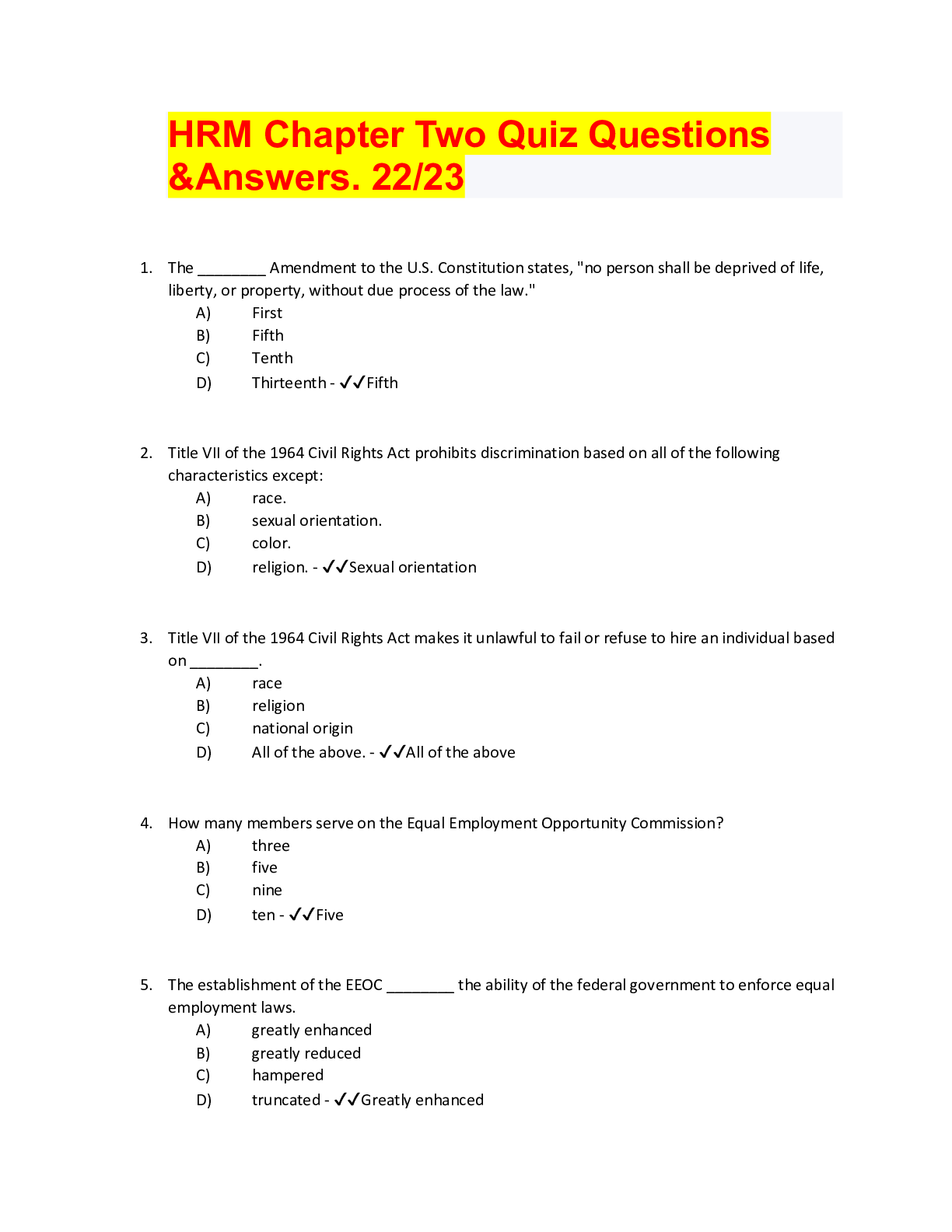
Buy this document to get the full access instantly
Instant Download Access after purchase
Buy NowInstant download
We Accept:

Also available in bundle (1)
Click Below to Access Bundle(s)
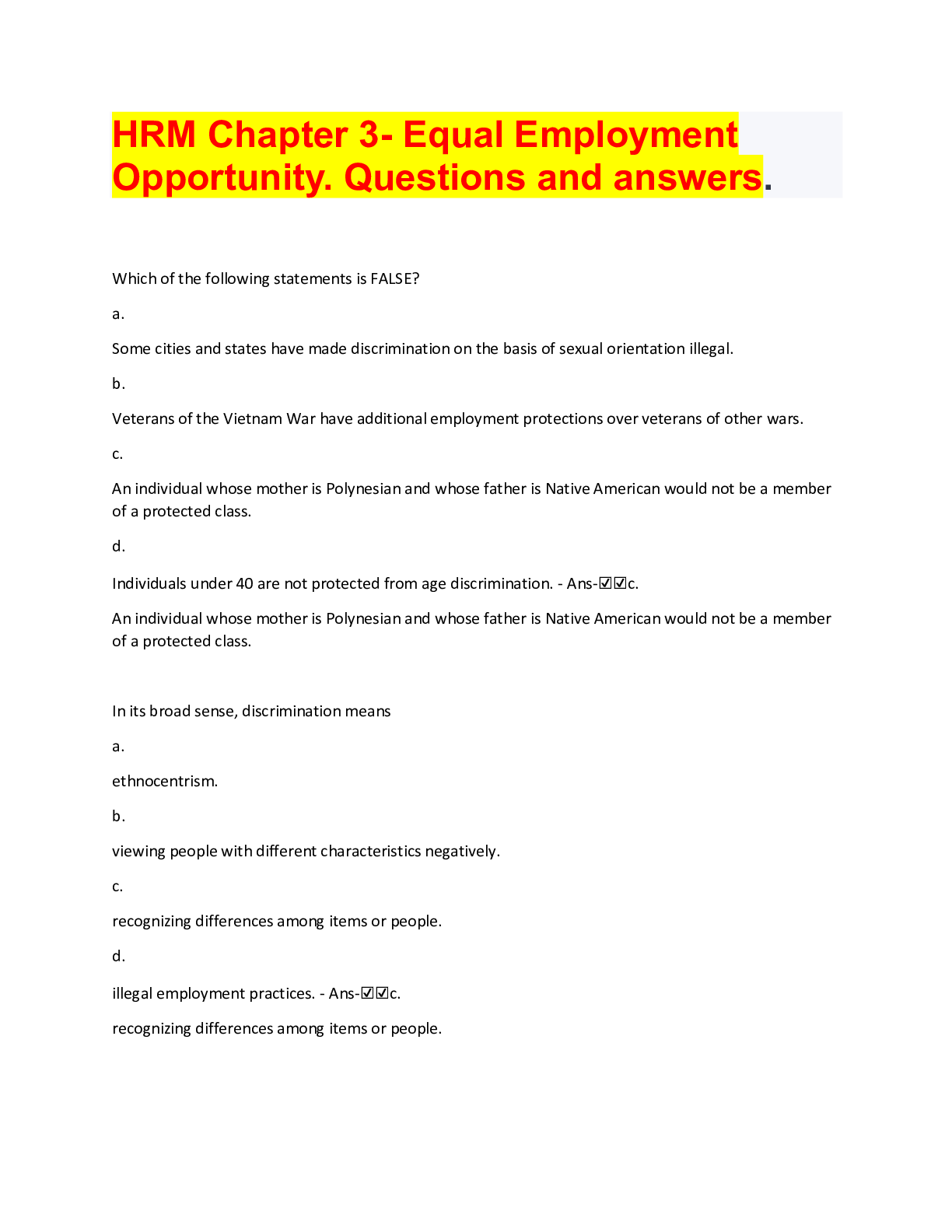
EMPLOYMENT LAW BUNDLE. 5 VERSIONS OF QUESTIONS AND ANSWERS. RATED A+
Comprehensive employment law documents. all questions and answers. rated A+. Download to score
By bundleHub Solution guider 3 years ago
$29
5
Reviews( 0 )
$13.00
Can't find what you want? Try our AI powered Search
Document information
Connected school, study & course
About the document
Uploaded On
Jul 14, 2022
Number of pages
22
Written in
All
Seller

Reviews Received
Additional information
This document has been written for:
Uploaded
Jul 14, 2022
Downloads
0
Views
204














